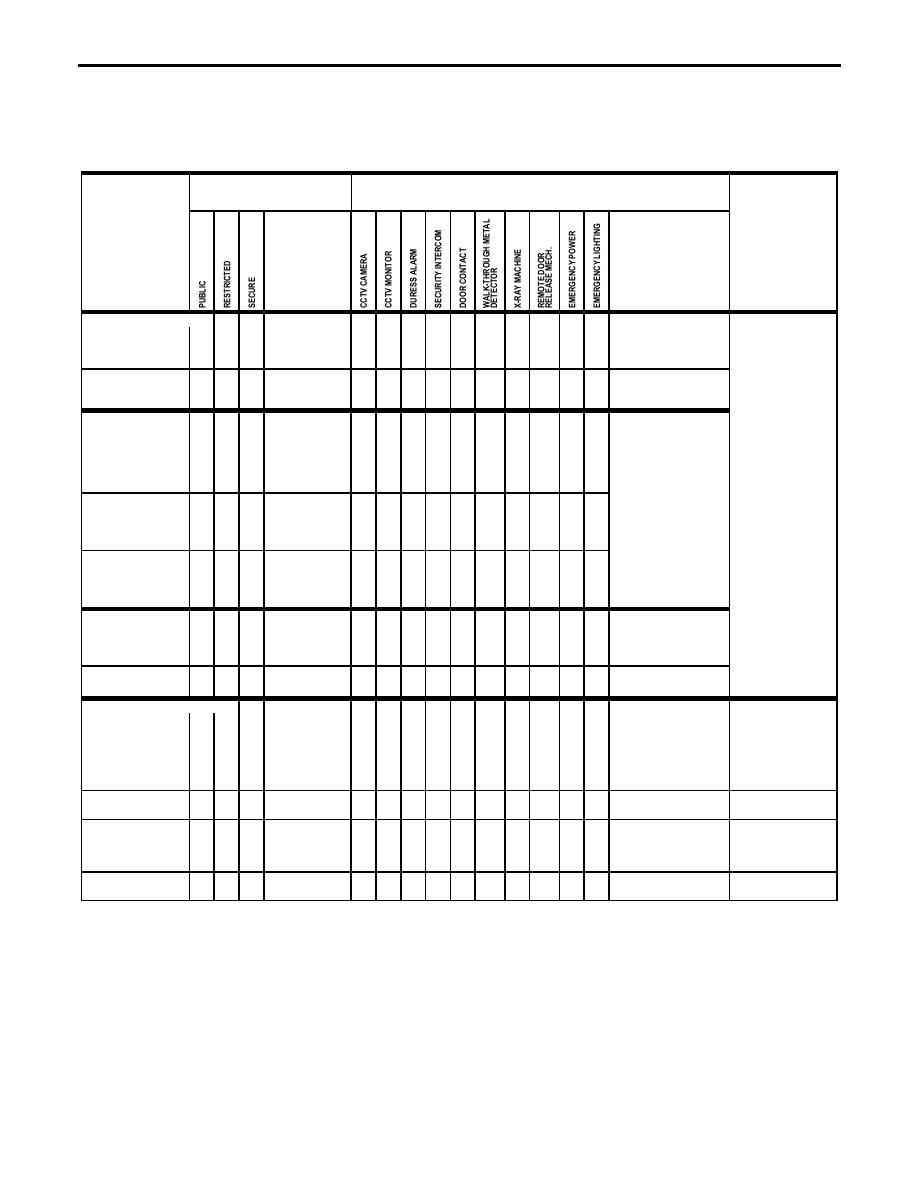
U.S. Courts Design Guide
Table 4.2
Access Control and Security
SPATIAL RELATIONSHIPS,
ACCESSIBILITY, & CIRCULATION
SECURITY & ALARM SYSTEMS
For explanation of numbers, see bottom of page
SPACES
REMARKS
REMARKS
GENERAL REMARKS
COURT OF APPEALS
En Banc Courtroom
3
3
(1) Provide a duplex
Q
Q
Q
Q
receptacle outside the
(1)
public entrance to each
courtroom, used for a
Panel Courtroom
3
3
Q
Q
Q
Q
relocatable walk-through
(1)
metal detector to
accommodate high-threat
DISTRICT COURT
proceedings.
Special Proceedings
3
3
2
USDC courtrooms may
Q
Q
Q
Q
Courtroom
provide audio-video link to cell
(1)
area for remote viewing of
proceedings by defendant.
Typical system may include
Standard Courtroom
3
3
2
Q
Q
Q
Q
one courtroom camera ( two
cameras for special
(1)
proceedings courtroom) and
link to courtroom PA system.
Also, in high-threat situations,
Magistrate Judge's
3
3
2
Q
Q
Q
Q
video may be continuously
Courtroom
(1)
monitored by USMS or may be
activated by duress alarm
system.
BANKRUPTCY COURT
Jury Courtroom
3
3
Q
Q
Q
Q
(1)
Non-Jury Courtroom
3
3
Q
Q
Q
Q
(1)
COURTROOM USER STATIONS
Judge(s)
Provide bench armor
Provide drawers for
Q
storage of minor supplies.
In appellate courtrooms,
provide duress alarm
stations at three central
judges' stations.
Courtroom Deputy Clerk
Q
Witness (USDC/USBC)
Station must
accommodate interpreter
with separate microphone
and movable chair.
Interpreter (USDC/USBC)
Public 1: Unscreened access (uncontrolled entrance to the building and spaces). Public 2: Screened access (public passes through a security check point). Public 3: Screened access, (locked under certain conditions).
Restricted 1: Uncontrolled access. Restricted 2: Remote access control (as in CCTV and electric door strikes). Restricted 3: Direct access control. Restricted 4: Counter/Window service.
Secure 1: Authorized staff only. Secure 2: Security staff and prisoners.
4-28
12/19/97


 Previous Page
Previous Page
